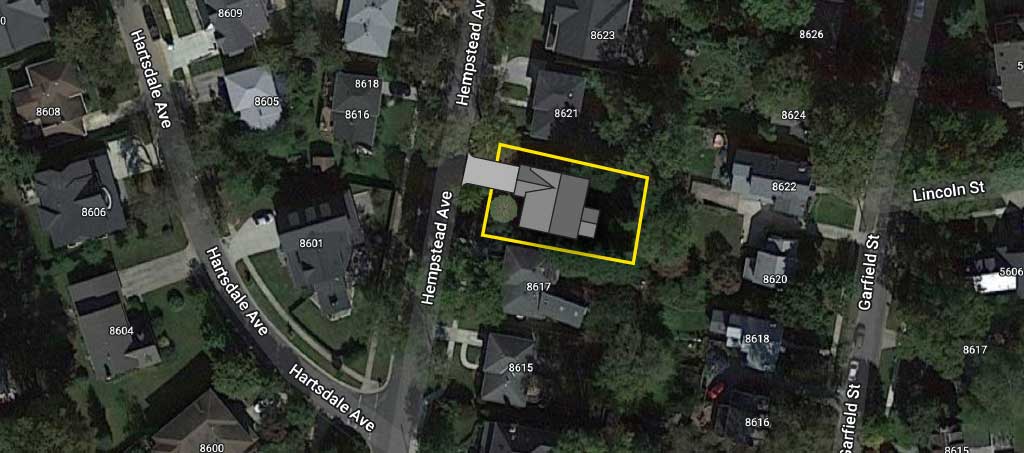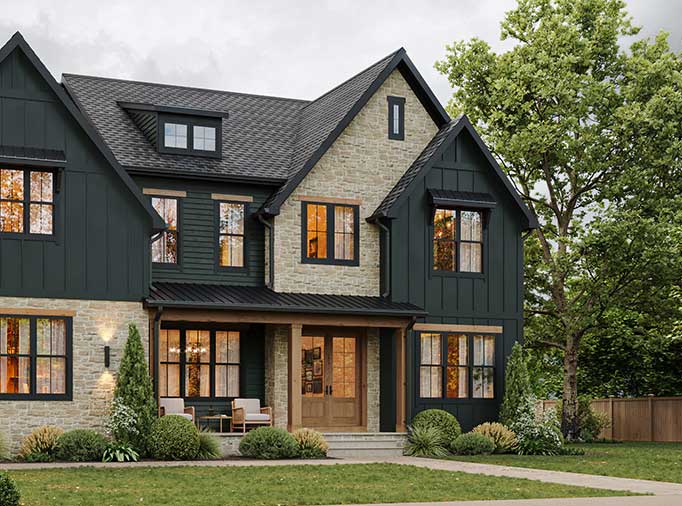February 2023 | General
The Art of Finding Land or a Lot
“Good” land is difficult to find. In many desirable areas, empty lots no longer exist. Available and buildable lots sell quickly, even in a softer real estate market. Using Classic Homes’ access to engineers, architects and legal experts—combined with our decades of experience—our team can help you navigate the potential pitfalls of finding the ideal homesite.
While the internet offers myriad ways to search for a lot, not all online searches are created equal. Here are several possible ways to begin your search.
Search the Classic Homes’ website. We acquire and partner with the owners of promising land and offer these lots through our Select Homesites packages.
Our website also features Homesite Searches for vacant land and potential teardowns in prominent areas direct from Bright MLS. Many older, smaller homes with no value dot established neighborhoods in our area. These homesites offer wonderful alternatives for new construction. In some counties, the impact taxes are waived if the existing home is habitable, since you are not adding burden to area schools, roads, and public services.
Retain an agency or broker to assist in the search. Experienced agents may know of the “coming soon” listings that are listed by agents in their office but not yet published online.
Search Bright MLS using a real estate apps or website. (Think Zillow, Redfin or Realtor.com.) Users should be aware that these sites often contain errors. Plus, many listing agents or home sellers may not disclose “material defects” in the listings.
Fine-Tuning Your Research
As you begin investigating lots, consider the following factors to effectively evaluate every option and compare lots to one another:
The cost of a lot is one of the most important decisions in your homebuilding journey. The lot acquisition cost should represent 25 to 33 percent of the total project budget. If that price is more than a third of your proposed budget, you may be compromising the construction budget, typically 50 to 60 percent of the total budget.
The size and shape of the lot is of paramount importance in choosing a lot particularly the size of the “build box,” which includes the property line setbacks (building restriction lines).
The usable square footage of the lot refers to how much of the lot can be built on. The amount of allowed roof area will determine the maximum size of the house on many small lots.
The slope of the land indicates whether the home’s basement will be a rear walkout or if steps will be needed to reach grade. Pay attention to the uphill slope from the front to determine garage feasibility. Ask the seller for a topographic survey for the answers to all these pertinent questions.
Utility access is, of course, vitally important. If a lot does not have access to water, for instance, make sure area zoning laws allow for a well to be dug. If a wastewater septic system will be necessary, the land must have a perc test (a procedure performed to review water drainage in different soils). If public utilities will be accessed, you must determine if the utilities are adjoining the land, as it could be cost-prohibitive to bring public water and sewer to the site.
Wooded lots can be inviting, but they also come with special considerations. Evaluate established trees that may necessitate removal to build a new structure. Most counties try to save “specimen” trees; cutting one down may require a special permit or additional fees.
It is vital to differentiate between a “parcel” and a “lot.” A parcel is an identification for taxation purposes, while a lot is a recognized subdivision of a property with a written legal description addressing permissions or constraints if that land is to be developed.
Zoning classification will determine the size of the “build box,” the maximum allowable height of the future home and the maximum roof area.
City or town borders bring special zoning and historic requirements to many home sites. These restrictions may limit building choices and can cost tens of thousands of dollars in excess fees.
Easements, rights-of-way or forest conservation areas could potentially limit or even prohibit building. Be sure to know of any of these restrictions.
A shared driveway may be required. In many counties, the local government requires newer homesites to use this technique to bring a driveway to the home. If the idea of sharing a driveway does not appeal to you, investigate if it would be possible to have your own driveway.
Homeowners’ associations (HOAs) are inherent to many home sites. Many HOAs have restrictive covenants, as well as architectural control committees, both of which can limit the type and size of home you can build. Required exterior paint colors, siding colors and special exterior finishes, for example, may add thousands of dollars to a project costs.
Access to the home site may require special consideration. Be aware of specific roads or bridges that have weight restrictions and truck-size limits which will directly affect the costs and construction time for the home.
A clear title on a piece of land is essential. Potential lots may be subject to back taxes or utility fees that need to be paid at settlement. Any previous ownership issues may create title disputes with expensive legal fees to secure the land’s title.
A history of rock in the area may indicate a shallow shelf of rock on a piece of land. Building on lots of these types will require special equipment or explosive blasting to install a foundation or to run underground utilities.
The history of the lot is important. Was the site used a dump? Is there trash, dead trees or an old foundation on the lot? Negotiations with the seller before settlement is essential to determine who will clean up the land and pay for the remediation.
The Complexities of Zoning
Every county has a set of specific zoning requirements for land. Buyers should investigate the following potential restrictions:
Is the property zoned for agricultural or commercial use? If so, buyers will need a zoning variance. In some instances, complete re-zoning may be required.
What is the allowable size and height of any new structure?
What percentage of the land can you built on?
Is the land “grandfathered” into older, less restrictive zoning laws?
Can you access public utilities on the land, or are private systems required?
Taking the Best Steps Forward
The search for a home site includes the following specific steps, all of which our team of professionals can guide you through as you begin your journey:
Determine your budget and speak to multiple lenders to determine what you can afford.
Consult with our agents, engineers, architects and legal experts to assist you in the search for the perfect piece of land and identify what you can and cannot do with it.
For information about any piece of land you consider purchasing, contact your local planning office to check the history of the lot, current zoning restrictions and any potential hazards of the home site. The county can also inform you of any future developments in the area.
Hire the relevant specialists, including a licensed excavator to perform a perc test and a professional surveyor to complete a legal land survey—two vital steps in your due diligence process.
Establish sufficient “discovery” time between the time your offer is accepted and the final settlement date. This period will allow you to uncover and address any “deal breaker” issues before you commit to purchasing the land.
The search for an ideal piece of land to build a home can be daunting. But, broken down into manageable parts and using the resources of Classic Homes’ experts, the steps can be completed without stress and with rewarding results. Contact us today for assistance with your land search.





